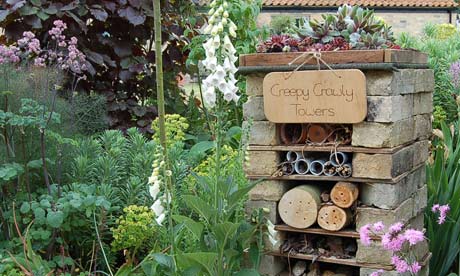Whilst no one likes the idea of creepy-crawlies, many insects are very important to creating a beautiful garden. One of the most important being bees to pollinate your trees, flowers and plants. The plants you use in your garden can help protect the environment. The next step is to choose the right type of plants for your garden. You can also plant a variety of different types of grass to attract butterflies and other insects. Choosing the right type of trees depends on your needs and tastes. Here are some tips to help you plan a nature-friendly garden.
Plants
In order to attract wildlife to your garden, you must make sure that your landscape is full of plants that will provide them with a shelter and food source. Choose plants with single flowers, such as iris, that will attract butterflies and bees, or bee-friendly species. Moreover, water is an important resource for any wildlife, so provide bird baths and bowls for them, especially during dry spells.
Lawns
To help wildlife thrive, keep your lawn in a natural state. Often, lawns are a rich source of food for a variety of insects, birds and small mammals. In the spring, if you have a torch handy, you can spot earthworms, cutworms, slugs, and other species of small critters feeding in the grass. You can also observe badgers and foxes quartering the grass in search of prey, while slow worms hunt the small grey slugs. If your lawn is not in a natural state, consider planting some native plants.
Hedges
When planning your landscape, one of the most important considerations is the presence of hedges. They can be a great way to tame your property and help wildlife live in it. Planting time and soil requirements vary from species to species, so be sure to check the directions on the package before you begin your project. For example, if you want a fast growing hedge, you can plant it in the winter and wait until it grows to its full height in the following year.
Trees
A nature-friendly landscape includes various plants that attract various animals. The main components of a wildlife-friendly landscape include food, water, nesting sites and shelter from predators. Trees offer a variety of these elements. They are also important as food and shelter for insects, birds and other wildlife. Native flowering shrubs and trees are ideal for this purpose. Other plants and trees that attract local birds and insects include bird feeders and bird houses.
Fruit trees
Whether you’re creating a nature-friendly garden for aesthetic reasons or for functional purposes, there are several steps you can take to grow fruit trees. The first step is to test your soil pH with a home-test kit. You may need to make some minor adjustments to the pH to get the right balance for the fruit tree. To start, consider planting a dwarf variety of fruit tree, which can be grown in containers.
Bee hotels
Bees love to nest in flowerbeds, so bee hotels can help you attract them to your garden. Bees can easily identify their home by their sized holes. Depending on the species, you can use different sizes of holes to attract different types of bees. Bees will then use these holes to build their nests. These buildings are also great for pollinating plants. Adding bee hotels to your garden is one of the easiest ways to make your garden more wildlife-friendly.
Nectar-producing blooms
Creating a garden full of nectar-producing plants is essential for attracting hummingbirds and other pollinators. In fact, hummingbirds require approximately 1,000 flowers per day. When they feed, they can consume as much as one-half their body weight in water. Unfortunately, urban sprawl and development have destroyed their natural habitat, so they need additional sources of food and water.
Nesting sites
If you’d like to make your garden more wildlife friendly, it’s vital to provide habitats for birds and other creatures. These landscapes should include nesting sites, food, and shelter from predators and weather. Plant native flowering shrubs and trees that attract bees and birds. Include bird feeders or bird houses. You can also place wooden pallets in your garden for additional nesting sites.
Pollination
Planting a nature-friendly garden will attract beneficial insects like bees and butterflies. You should choose plants that will attract pollinators and not just flowers. These include early crocus, winter-flowering viburnum, and ivy. Choose plants with open flowers because they attract more pollinating insects and provide the most pollen. Bees and butterflies are crucial to the survival of plants and are important for fertilising soil. Plant native and introduced species in your garden and plant them with pollinator-friendly flowers. Planting trees with both blossoms and berries is also a good idea.
Water
Creating a wildlife friendly garden is not hard, but it does require some planning. Whether you want to create a small pond or a large bog, you should consider using water wisely. Having a water source in your garden will attract a variety of animals and birds to your garden, as well as a host of beneficial insects. Small ponds can be built using stone basins or shallow buckets. Fill them with rainwater if you have access to them, and plant waterlilies. Your garden will look more visually interesting if you use different levels. In the shrub layer, plant blackberry, gooseberry and redcurrant plants. The plants will feed the insects and pollinators.

